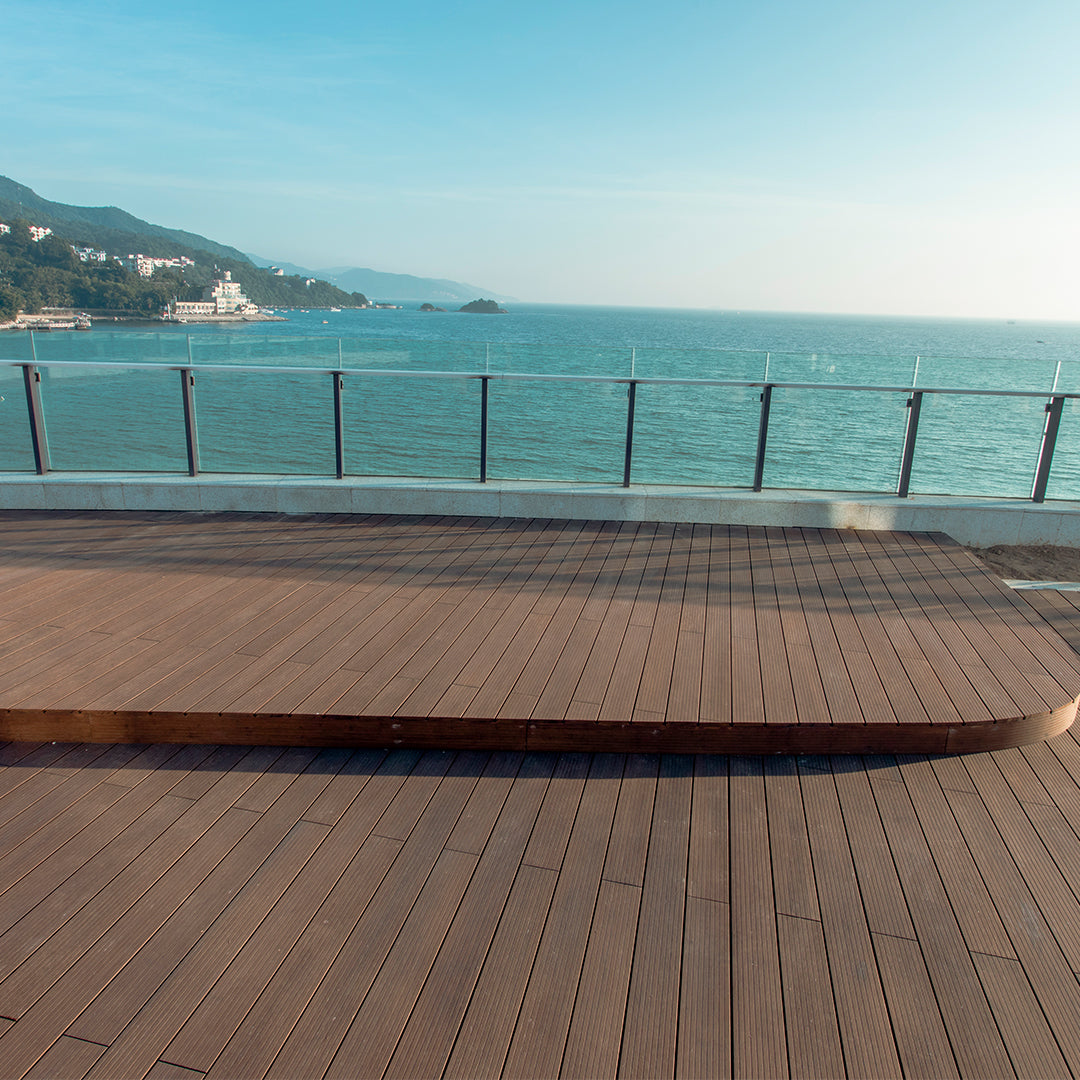
The Journey of Bamboo Decking: How It's Made and Why It Matters
As more homeowners and builders seek sustainable and eco-friendly materials for construction and renovation projects, bamboo decking has emerged as a popular choice. Known for its strength, durability, and sustainability, bamboo decking is transforming outdoor spaces around the world. In this blog post, we’ll explore the journey of bamboo decking from its raw form to the final product and discuss why it’s an excellent choice for your next decking project.
The Growing Popularity of Sustainable Decking
Before delving into how bamboo decking is made, it’s essential to understand why sustainable decking options like bamboo are gaining traction. Traditional wood decking, while beautiful, often involves deforestation and long growth cycles. Composite decking, made from a mix of wood fibres and plastic, offers durability but can raise environmental concerns due to its synthetic components.
Bamboo decking stands out as a sustainable decking alternative because bamboo is one of the fastest-growing plants on the planet. It can be harvested in just 3-5 years, compared to the decades required for hardwood trees. This rapid growth rate makes bamboo a renewable resource that can help reduce the strain on our forests.
The Journey of Bamboo Decking: From Harvest to Home
1. Harvesting Bamboo
The journey of bamboo decking begins in bamboo forests, primarily located in Asia. Bamboo plants grow quickly, reaching maturity in just a few years. When bamboo stalks are ready for harvest, they are cut at the base, which allows new shoots to grow in their place. This method of harvesting ensures that the bamboo forest can regenerate rapidly, maintaining the ecosystem's balance.
2. Processing the Bamboo
Once harvested, the bamboo stalks are transported to processing facilities. Here, the bamboo is cut into strips and treated to remove starches and sugars, which helps prevent insect infestations and decay. The strips are then boiled or steamed, a process that also enhances the bamboo’s natural durability and resistance to moisture.
3. Carbonisation
To achieve the desired colour and texture, the bamboo strips undergo a carbonisation process. This involves heating the bamboo to high temperatures, which not only darkens the bamboo but also increases its resistance to mould and mildew. Carbonised bamboo decking has a rich, warm hue that many homeowners find appealing.
4. Lamination and Pressing
The processed bamboo strips are then laminated together under high pressure using eco-friendly adhesives. This lamination process creates solid planks that are both strong and stable. The planks are pressed to ensure they have a uniform thickness and density, which is crucial for their performance as decking material.
5. Finishing Touches
After lamination, the bamboo planks are sanded and finished to create a smooth surface. Depending on the desired look, the planks may also be stained or sealed with protective coatings. These finishes enhance the bamboo's natural beauty and add an extra layer of protection against the elements.
6. Quality Control
Before the bamboo decking is shipped out, it undergoes rigorous quality control checks. This ensures that each plank meets the high standards required for durability and performance. Only after passing these checks is the bamboo decking ready for installation in your outdoor space.
Why Bamboo Decking Matters
Sustainability and Environmental Benefits
One of the most significant advantages of bamboo decking is its sustainability. As a rapidly renewable resource, bamboo helps reduce the pressure on our forests and contributes to more sustainable building practices. Additionally, bamboo cultivation requires fewer pesticides and fertilisers compared to traditional timber, making it an environmentally friendly choice.
Strength and Durability
Bamboo decking is incredibly strong, with a tensile strength greater than steel. Its durability makes it an excellent choice for outdoor decking, capable of withstanding heavy foot traffic, furniture, and the ever-changing British weather. When properly maintained, bamboo decking can last for decades, offering a long-term solution for your decking needs.
Aesthetic Appeal
The natural beauty of bamboo decking is another reason it’s becoming a popular choice. With its unique grain patterns and warm tones, bamboo adds a touch of elegance to any outdoor space. Whether you prefer a modern or traditional look, bamboo decking can be customised to fit your style.
Low Maintenance
Compared to wood decking, bamboo decking requires less maintenance. While wood decking often needs regular staining and sealing to protect against the elements, bamboo decking’s natural resistance to moisture and insects reduces the need for frequent upkeep. A simple cleaning with mild soap and water is usually sufficient to keep your bamboo decking looking its best.
Cost-Effective
Although the initial cost of bamboo decking may be higher than some other materials, its longevity and low maintenance requirements make it a cost-effective choice in the long run. Investing in bamboo decking means fewer repairs and replacements over time, saving you money and effort.
Bamboo Decking vs. Composite Decking
While bamboo decking offers numerous benefits, it’s essential to compare it to other popular decking materials, such as composite decking. Composite decking is made from a mixture of wood fibres and plastic, creating a durable and low-maintenance product. However, there are some key differences to consider:
Environmental Impact
Both bamboo decking and composite decking are considered more environmentally friendly than traditional wood decking. However, bamboo has the edge due to its rapid growth and renewability. Composite decking, while often made from recycled materials, still involves the use of plastics, which can raise environmental concerns.
Aesthetic Differences
Bamboo decking provides a natural look that many homeowners find appealing. Its unique grain and warm colours add an organic feel to outdoor spaces. Composite decking, on the other hand, can be manufactured in a wide range of colours and finishes, offering more versatility in design. The choice between the two often comes down to personal preference.
Durability and Maintenance
Both bamboo and composite decking are durable and require less maintenance than wood decking. However, composite decking is entirely resistant to rot and insects, whereas bamboo, despite its natural resistance, may still require some treatment to maintain its longevity. Composite decking is often seen as a more low-maintenance option, but bamboo's aesthetic and environmental benefits can outweigh this factor for many homeowners.
Conclusion: Making the Right Choice for Your Decking Needs
Bamboo decking offers a sustainable, durable, and visually appealing option for those looking to enhance their outdoor spaces. Its journey from harvest to home showcases a process rooted in sustainability and craftsmanship. Whether you’re prioritising environmental impact, aesthetic appeal, or long-term cost savings, bamboo decking is a versatile choice that ticks all the boxes.
At Timber Mouldings Direct, we are committed to providing high-quality bamboo decking that meets the needs of our customers. Our bamboo decking products are designed to enhance your outdoor living experience while contributing to a more sustainable future. Contact us today to learn more about our bamboo decking options and start your journey towards a beautiful, eco-friendly outdoor space.

Leave a comment